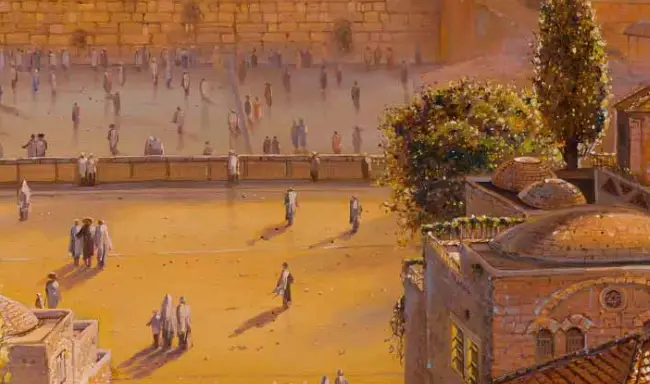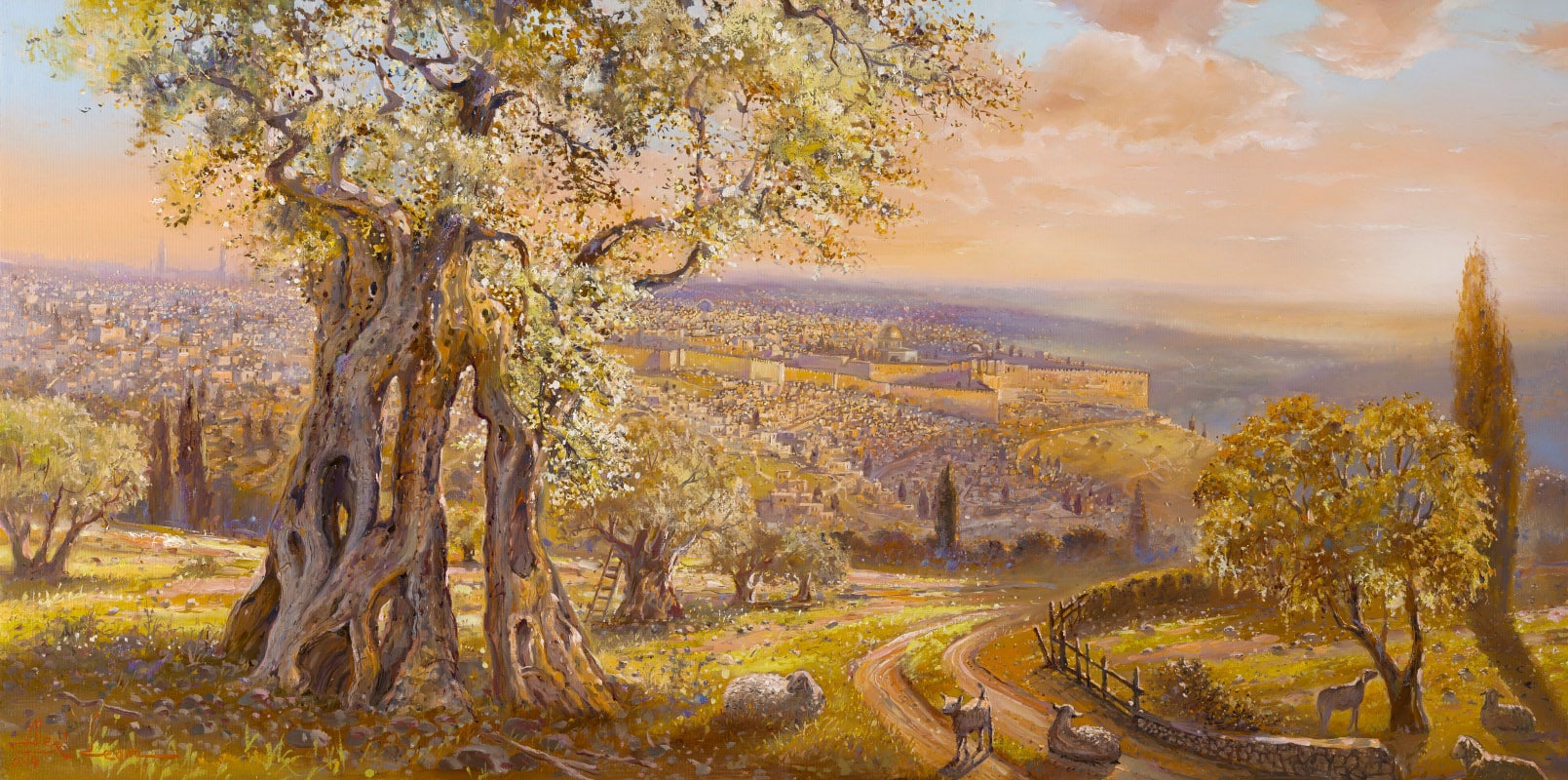The Jewish nation has much to tell all humanity and the best way to do it is through art. The Holy Land is the scene of multi-ethnic varieties that are drawn with peculiar beauty in the paintings of Jerusalem.
It is necessary to take a deep look at the Promised Land, its streets, walls, the Second Temple of Jerusalem, and many more iconic places that are part of fascinating Jewish paintings where the sun is witness to everything that happens in Jerusalem, its incandescent rays illuminate the city on all sides, joy and hope keep it company.
Zion Gate in Jerusalem
This gate is known as the Gate of the Jewish Quarter, dates from 1540, and is part of the 8 gates that make up the Old City of Jerusalem. It is also called King David's Gate because it leads to his tomb on Mount Zion.
To the southwest of the Old City is the iconic gate that holds the vestiges of the 1948 War of Independence.
The Church of the Holy Sepulcher
Basilica of veneration recognized since the fourth century where the Holy Sepulcher of the King of Kings is located. The Calvary with two chapels: the Greek Orthodox and the Catholic, the Holy Sepulcher and the Chapel of St. Helena where the Cross of Christ was found make up the site. The Altar of the Crucifixion (Edicule) is in the Greek chapel, and it is located on the Rock of Calvary.
A site that marks a before and after for Christianity that brings together the Calvary (Golgotha), where Jesus was crucified, the tomb where he was buried and resurrected for the glory of all believers, and the Cross of the crucifixion found by St. Helena, places where their domes do not escape the brush of artists, these being the most prominent in the paintings of Jerusalem.
The Holy Sepulcher is an important pilgrimage center and a fascinating complex of medieval architectural structures worthy of honoring in the Basilica of the Resurrection, at the entrance you can see where the body of Jesus was prepared for burial, the Stone of Anointing.
Sukkot decorations
Sukkot is the Hebrew plural of Sukkah, a cabin or hut that is built for the Sukkot holiday and serves as a temporary dwelling for Jews where they traditionally decorate their enclosures with hanging fruit, aromatic plants, and other Sukkot decorations including posters and banners with eye-catching Jewish artwork.
Also known as the Feast of Cabins or the Festival of Tabernacles, it is one of the three pilgrimage festivals of the Jewish year along with Pesach and Shavuot.
When does Sukkot begin in the Jewish year?
In 2022, Sukkot begins at sunset on Sunday, October 9, and ends on Sunday, October 16 also at sunset, therefore, Sukkot decorations must be made prior to that date, i.e., immediately after Yom Kippur.
During the celebration of Sukkot, Jews spend as much time as possible there, thus requiring certain parameters to be met to be following the precepts established by Shammai ha-Zaken, an “Elder” scholar of the first century BC.
It is convenient to build the Sukkah large, with 3 or 4 walls of any material but strong enough to withstand the wind, the roof should provide shade during the day and at night to appreciate the sky, so covering it with tree branches or reeds are good options.
Arba Minim for Sukkot
To perform a ritual in the celebration of Sukkot contemplated in the third book of the Torah, Leviticus; it is necessary to have the Arba Minim, in Hebrew four species: a branch of date palm (lulav), myrtle (hadas), willow (aravah) and citron (etrog) to bless the Sukkah where the Sukkot decorations are made.








